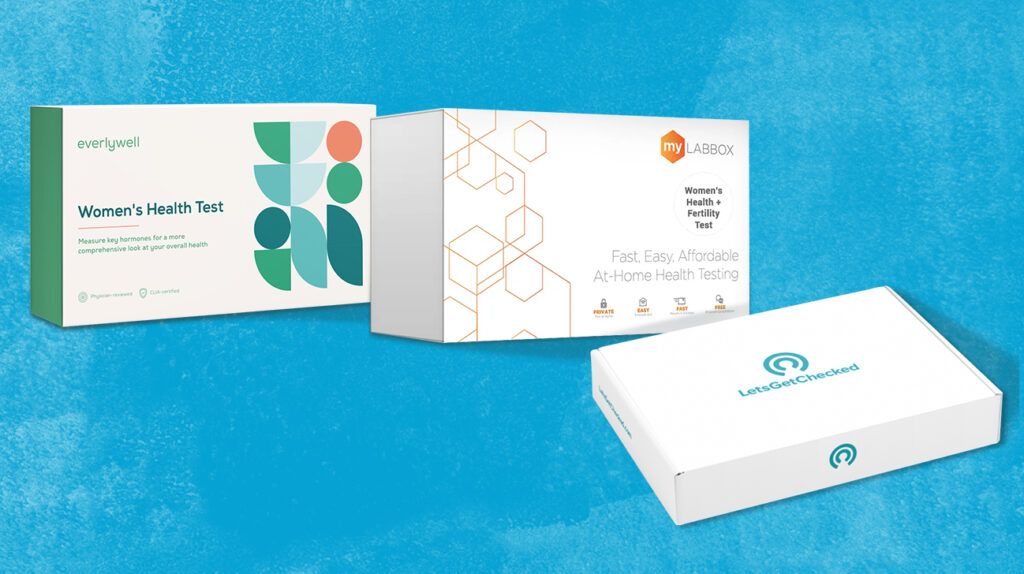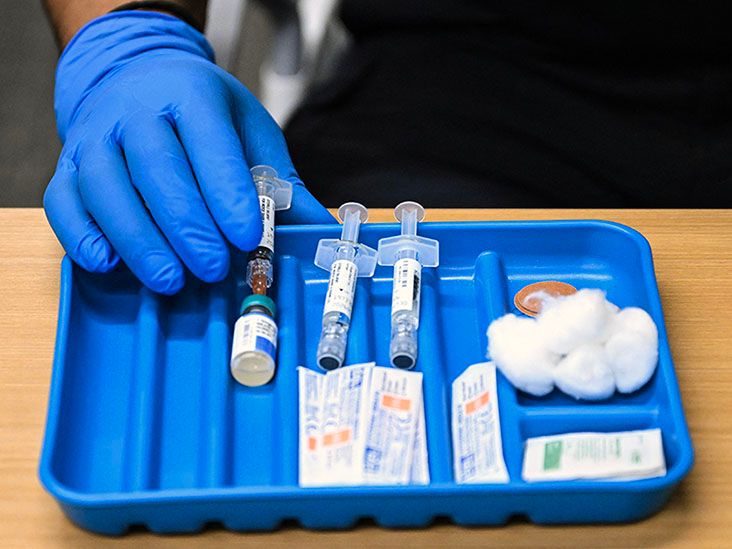At-home polycystic ovary syndrome (PCOS) tests may provide insights into hormone levels that someone can then share with their doctor or healthcare professional. However, these test results alone are insufficient for doctors to diagnose PCOS.
The following table compares the tests in this article on their collection method, results time, extra features, and more.
| Collection method | Result time | Extra features | Price | |
|---|---|---|---|---|
| LetsGetChecked | blood and saliva | 2–5 days | nurses provide guidance and next-step advice | $139 |
| Modern Fertility | blood | 3 days | free fertility planning tool, online community | $179 |
| Everlywell | blood and saliva | a few days | recorded education session | $249 |
| myLab Box | blood and saliva | 1–5 days | free physician telemedicine appointment | $149 |
When diagnosing PCOS, doctors and healthcare professionals look for
Some common symptoms of PCOS are:
- heavy periods
- infertility
- weight gain or difficulty losing weight, particularly around the waist
- excessive hair growth, particularly around the face, chest, stomach, and upper thighs
- pelvic pain
- oily skin or acne
- irregular or absent periods
- male pattern hair loss or hair thinning
Symptoms usually appear in a female’s teenage years or early twenties, with most caused by higher than average
A
Generally, when diagnosing PCOS, doctors and healthcare professionals use the Rotterdam criteria. The criteria include:
- irregular or infrequent periods
- evidence of hyperandrogenism following blood work or clinical criteria
- the appearance of polycystic ovaries when viewed through an ultrasound scan
A person must display two of the three criteria for a doctor to diagnose PCOS.
At-home PCOS tests look for female hormonal imbalances, with high androgen levels possibly indicating PCOS.
The types of samples needed for an at-home test include:
- saliva
- blood
- urine
- a combination of the above
Most tests provide a lancet so a person can take a blood sample using the finger-prick method.
Results are typically available within a few days of the lab receiving the test samples from the female.
Only a doctor or qualified healthcare professional can make a formal PCOS diagnosis.
However, anyone can use an at-home PCOS test if they feel they may have a hormonal imbalance. The results from such tests can help a doctor in their diagnosis.
Individuals need to speak with a doctor if they are experiencing symptoms that interfere with their everyday lives.
If a female has taken an at-home PCOS test, they need to share their results with their doctor to help them provide a formal diagnosis. Although at-home PCOS tests can provide information on hormonal imbalances, only a doctor can provide an official PCOS diagnosis.
A person may notice if they experience symptoms of PCOS, but only a doctor can officially diagnose it. At-home PCOS tests can provide a doctor with the results to help with diagnosis.
There is no test that definitively diagnoses PCOS. However, many people with PCOS have a hormonal imbalance. Hormone testing can help to identify whether key hormones are outside of expected limits and help a healthcare professional make a more accurate diagnosis.
A doctor can diagnose PCOS by initially discussing a person’s medical history and symptoms. They may then complete physical exams or arrange for an imaging test, such as an ultrasound.
PCOS is a hormonal disorder that affects a person’s ovaries. Symptoms can range from mild to severe and include pelvic pain, oily skin, and weight gain. Symptoms typically present in a person’s teenage years through to their early 20s.
At-home PCOS tests look at an individual’s hormones, as for many people, hormonal imbalances are a typical sign of PCOS. Testing samples are typically blood, saliva, or urine.
Although at-home test results can show irregularities with hormones, they are not indicative of a formal PCOS diagnosis. For this, a person must consult a doctor or qualified healthcare professional.


